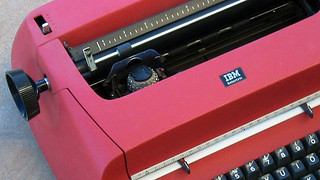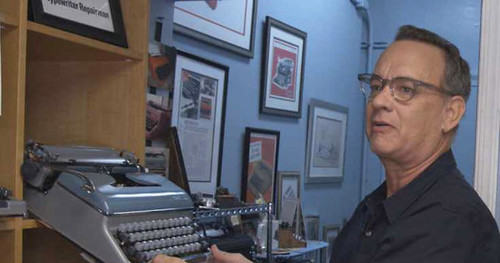
PREV ARTICLE
NEXT ARTICLE
FULL ISSUE
PREV FULL ISSUE
ORIGINALS, COPIES, AND TYPEWRITTEN LETTERSE-Sylum Feature Writer and American Numismatic Biographies author Pete Smith submitted this interesting discussion on the value of a typewritten letter. Thanks! -Editor
The Value of a Typewritten Letter
Last week Wayne mentioned lot 526 in the upcoming auction of selections from his library.
Within that lot is I have seen a lot of changes in typesetting and printing in the past sixty years. I got through college with a portable Smith Corona manual typewriter. Out in the real world, the industry standard was the IBM Selectric Typewriter with the bouncing ball. It has been fifty years since I saw my first word-processing machine.
Once original letters were unique with the possibility of a carbon copy that could be identified as a copy. Word processing could produce multiple originals and copy quality became so good that it was difficult to tell a copy from an original.
Printing and publishing also went through many improvements. Fifty years ago, I published a
book with copy set in lead type. That technology went back to the nineteenth century. Then along
came phototypesetting and
In 1991 I attended What does this mean for literature collectors? Is a typewritten original letter worth any more than a letter printed with multiple copies or a photocopy? For a book collector, do you have any interest in knowing how the book was published? Does obsolete technology have any effect on perceived value? Great questions. By definition a copy is not an original. But what if the "original" is a computer file of ones and zeros? Is the printed version of that file ALSO an original? Or are those ones and zeros nothing? Is the FIRST printed copy THE "original"? In the communication between myself and Pete, I'd say the physical copy I sent to Pete via the U.S. Mail is the one and only original. A second one I printed for my own records the same day would be physically indistinguishable, but it's still a copy. Actually, the one I sent Pete would have my inked signature to distinguish it. But Pete is right that printing and copy quality are both so good that "original" and "copy" are hard to tell apart without the additional evidence of a signature and postmarked envelope. In July, New York Times podcaster Ezra Klein interviewed actor Tom Hanks, known for his hobby of collecting typewriters. Maybe I shouldn't have been surprised that Hanks actually USES them. Daily. Here's an excerpt from the transcript. -Editor
And here's the thing, though, Ezra, it's one thing to own typewriters. It's something else completely to use them. And I type every single day. My main personal correspondence is in typewriters. I send letters all the time. And sometimes I have any number of people that I keep up regular correspondence with because a typewritten letter is never thrown away — that's one thing — and two, if you take care of it, it will last as long as the carvings on the stone wall of the Temple of Karnak in Egypt. You are not just applying words onto paper. You are stamping them into the fibers with permanent ink. And there's something about that that I find very, very romantic, and, I will also say, permanent. And that is why I have way too many typewriters.
To read the complete transcript, see:
See also:
To read the earlier E-Sylum article, see:
Wayne Homren, Editor The Numismatic Bibliomania Society is a non-profit organization promoting numismatic literature. See our web site at coinbooks.org. To submit items for publication in The E-Sylum, write to the Editor at this address: whomren@gmail.com To subscribe go to: https://my.binhost.com/lists/listinfo/esylum All Rights Reserved. NBS Home Page Contact the NBS webmaster 
|


